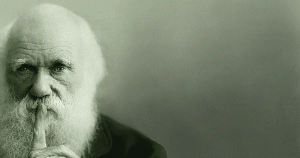For reasons that anthropologists have not yet fully uncovered, Homo sapiens evolved a pronounced aesthetic sensibility (Schellekens and Goldie, 2011): not only has Homo sapiens developed more sophisticated tools and weapons than any other species, Homo sapiens has also cultivated the most elaborate artistic sensibilities (Diamond, 1992, 2012). Mere survival has never been enough for Homo sapiens, humans have also hungered for aesthetic satisfaction: beauty, self expression, art, imaginative invention, “Progress,” etc. Other species are perfectly content with the mundane and mediocre. Cows and horses do not complain about eating grass, nor do they seek ways to dress up their salads in order to make them as pleasing to the eye as they are to the palate.
Discontent with the status quo is a uniquely human phenomenon. Among all living species, chimpanzees share the highest percent of genes in common with humans ( Gibbons, 2012). While chimpanzees have exhibited an impressive capacity for tool use (Lonsdorf, et al., 2010), chimps remain content to limit their tool usage to a clever manipulation of found objects. One of the most important distinctions between chimps and humans is that humans have never been content with anything . Rather, Homo sapiens has always been intent upon improving everything, e.g., more and tastier food, more comfortable housing, better fitting clothing, increased quality and quantity of information, improved transportation, etc. In short, unlike any other creature, Homo sapiens is unwilling to accept the world as it is. Instead, humans are imbued with an insatiable passion to make the world and themselves better . That’s what it means to be an agent.
Agents are dissatisfied with the status quo, and they devote themselves–often with a single-minded passion that borders on mania (Dolnick, 2011, p. 48)–to redefining reality in such a way that their view of themselves and the world they inhabit more closely approximates their aesthetic aspirations. That is what drives Olympic athletes to excel in competitions where there is little or no monetary payoff, it is what drives scientists to struggle throughout their entire lifetimes in pursuit of maddeningly elusive truths, and it is what drives artists to create masterpieces.
Why are humans plagued with such aesthetic discontent? Thanks to Darwin, the most straightforward answer to any question regarding survival vs. extinction is simply: advantageous evolutionary adaptation. Humans are discontented aesthetes because–at least, so far–it has been evolutionarily advantageous for humans to be agents of change. Most creatures survive by randomly evolving biological attributes that enhance their fitness within a given environment, i.e., they succeed by adapting to the status quo. Super-adaptable apes, however, reverse that relationship by tweaking the environment to accommodate their whims (McGettigan, 2011), e.g., transforming the Los Angeles basin from a barren wasteland into a sprawling city of dream weavers.
References
Darwin, Charles. On the Origin of Species by Means of Natural Selection, or the Preservation of Favoured Races in the Struggle for Life . 1st ed. London: John Murray, 1859.
Diamond, Jared M. The Third Chimpanzee: The Evolution and Future of the Human Animal . New York, NY: HarperCollins, 1992.
Diamond, Jared M. The World until Yesterday: What Can We Learn from Traditional Societies? New York: Viking, 2012.
Dolnick, Edward. 2011. The Clockwork Universe: Isaac Newton, the Royal Society, and the Birth of the Modern World . New York, NY: Harper.
Gibbons, Ann. “Bonobos Join Chimps as Closest Human Relatives.” – ScienceNOW . AAAS, 13 June 2012. Web. 17 Dec, 2012.
Lonsdorf, Elizabeth, Stephen R. Ross, Tetsurō Matsuzawa, and Jane Goodall. The Mind of the Chimpanzee: Ecological and Experimental Perspectives . Chicago: University of Chicago, 2010.
McGettigan, Timothy. Evolution at the Speed of Thought: A New Chapter in the History of Evolution . Los Angeles, CA.: WheelMan Press, 2013.
McGettigan, Timothy. Good Science: The Pursuit of Truth and the Evolution of Reality . Lanham, MD.: Lexington Books, 2011.
Schellekens, Elisabeth, and Peter Goldie. The Aesthetic Mind: Philosophy and Psychology . Oxford: Oxford University Press, 2011.
 The Socjournal A new media journal of sociology and society
The Socjournal A new media journal of sociology and society



Planet of the Persnickety Apes: Darwin and the Aesthetics of Survival: For reasons that anthropolog… http://t.co/BA70tkP9PE #sociology